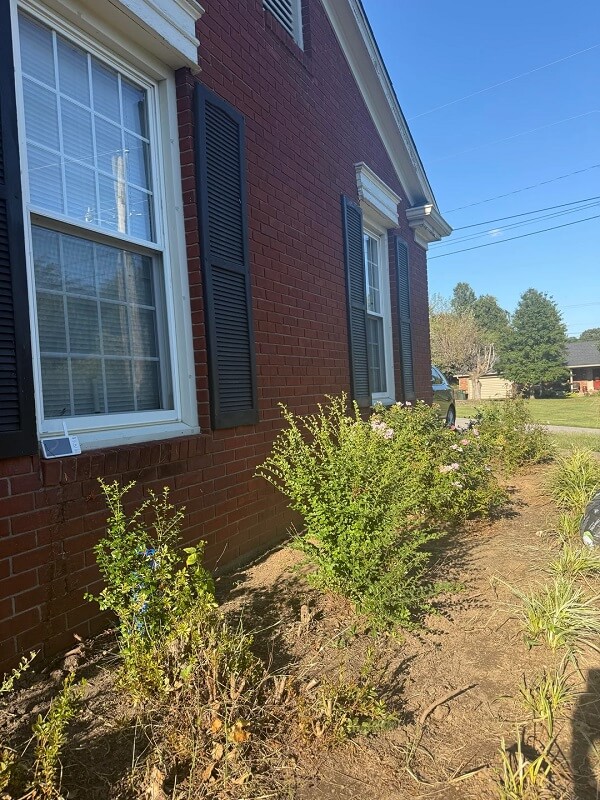While opinions vary in the gardening community, a good portion of gardeners are adamantly against the use of landscape fabric (and for good reason).
One Redditor took to the r/landscaping subreddit to ask whether they should use landscape fabric and received plenty of warnings not to.
 Photo Credit: Reddit
Photo Credit: Reddit
 Photo Credit: Reddit
Photo Credit: Reddit
The poster shared photos of the area of their yard they were asking about and wrote, “When we moved in we laid landscape fabric and mulch, only to have crabgrass consume our flower beds. We pulled up the old fabric and still have crabgrass coming up.” They then proceeded to ask for advice on how to handle the situation.
Other Reddit users were mostly in agreement that using landscape fabric again wasn’t the way to go.
“I’m in the never-fabric camp. That crap is a nightmare. The weeds will keep coming and just get entangled in it, making it harder to remove,” one person commented.
Landscape fabric is a gardening tool that comes with several drawbacks, such as weeds continuing to grow even when the fabric is used, which makes purchasing the product a waste of money. That isn’t the only downside, though, as landscape fabric also makes it more difficult for wanted plants to grow, as it prevents nutrients from reaching the soil and plant roots.

Mitsubishi Electric’s efficient heating and cooling HVAC solutions can help you stay comfortable no matter the weather or region. You can even regulate temperatures in each room with individually controlled all-electric heat pump systems.
With an energy-efficient, all-climate system from Mitsubishi, you can reduce the amount of energy needed to heat and cool your home, receive up to $2,000 in tax credits, and get peace of mind knowing you’re choosing rigorously tested, high-quality products.
Additionally, this fabric will eventually decompose, which means you’ll have to shell out more money to replace it. That decomposition will also cause chemicals from the fabric to leach into your soil and damage it.
A simpler solution is to use cardboard as mulch and to plant a few native plants in the area. Installing native plants in a small area or the entire lawn will require far less maintenance than non-native plants. Plus, rewilding your yard or a corner of it means you’ll save on your water bill, since native plants need less water.
A native lawn will also guarantee you’ll see more wildlife, including pollinators, which will help protect human food supplies while creating a healthier ecosystem.
If this poster planted a few native plants in their flower beds, like clover or blue grama, they would reap all these benefits and more. Plus, the Redditor who called landscape fabric a “nightmare” pointed out, “Finally, this goes without saying, but you can get some more desirable plants in there for competition – ideally something native or very tolerant to your climate so that it thrives.”
TCD Picks » Upway Spotlight
💡Upway makes it easy to find discounts of up to 60% on premium e-bike brands
Join our free newsletter for easy tips to save more and waste less, and don’t miss this cool list of easy ways to help yourself while helping the planet.


Comments are closed.